Exploring Korean Country Cuisine and Fermented Seasonings
Jan 27,2022
Exploring Korean Country Cuisine and Fermented Seasonings
Jan 27,2022
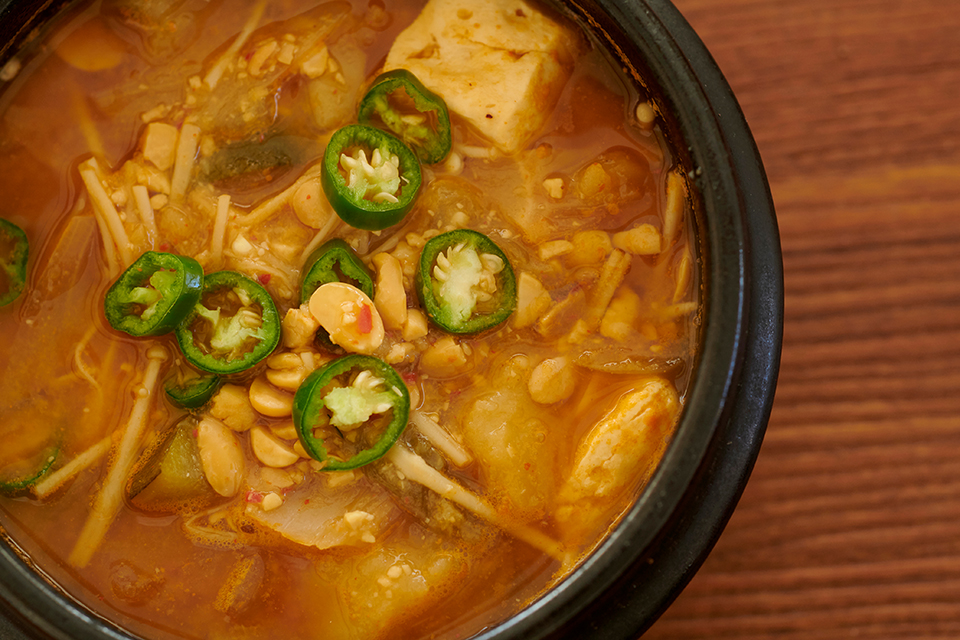

Many fermented foods are deeply rooted in daily Korean life, including common fermented seasonings such as doenjang (miso), ganjang (soy sauce), and gochujang (red chili miso paste). For this article, we spoke with Shimada Kozue who researches rural Korean food and agricultural practices and who recently launched Studio Paryo — which means fermentation in Korean — in November 2021.
Ogawa, Saitama, has gained renown as a center for organic produce, with many pesticide-free farms and wineries that make wine without the use of chemical fertilizers. Shimada Kozue, our guide for this piece, moved to Ogawa from Tokyo last year. She welcomed us into her home, saying: “It’s cold, isn’t it? It’s always one or two degrees cooler here than in the city.”
Shimada’s title and profession is rural Korean food researcher. Her father is Japanese and her mother is ethnic Korean but a permanent resident of Japan. Her grandmother used to run a restaurant that served kimchi and Korean side dishes.
Despite her background, Shimada’s first job had nothing to do with Korean food. We began our conversation, however, by asking what led her to her current vocation.
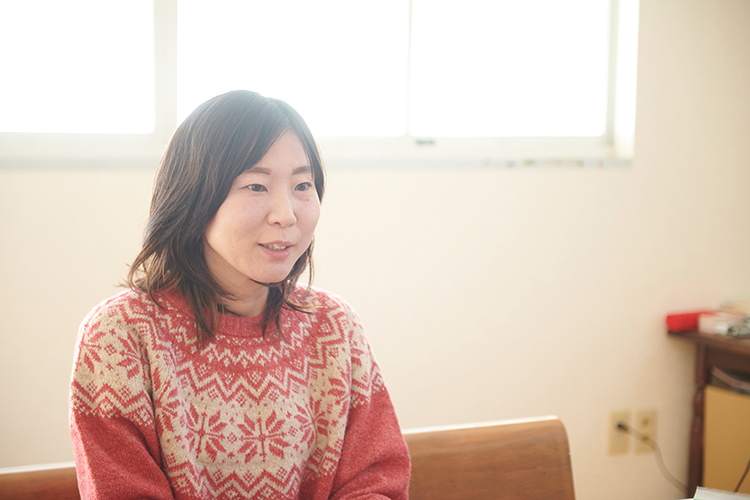
Shimada Kozue, rural Korean food researcher
“After I graduated, I got a job in the video industry, which meant my schedule was very erratic. I wanted to get a better handle on my physical condition, and what I ended up using was traditional kanpo herb-based medicine and medicinal foods. Korea has a similar saying to the Japanese saying that ‘medicine and food come from the same place’, so the concept of getting in shape through my diet felt natural to me and my body. From that point on, my interest shifted to the world of Korean food.”
To learn about Korean food, she quit her video job and began working in two Korean restaurants. One was a Michelin-starred Korean restaurant in Tokyo, and the other was in Kanagawa prefecture where she could eat Korean food while getting involved in farming. Both restaurants were particular about serving up natural flavors without using chemical seasonings. Ultimately, though, she decided to work solely at the Kanagawa restaurant.
“At that restaurant, I was in charge of preparing the homemade kimchi. I used to often ask my mother and grandmother for their opinions about the taste. My grandmother was always soft on me [laughs], so I took my mother’s harsher opinions as a guide.”
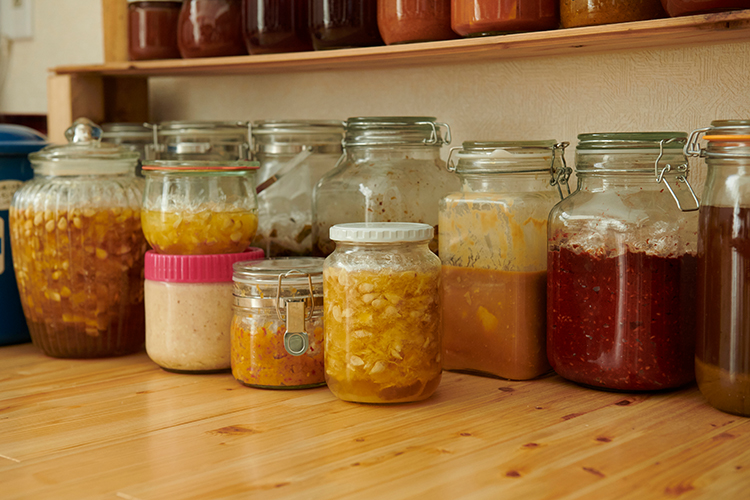
Shimada’s home is lined with all kinds of preserves and fermented foods
Because the restaurant’s business was booming, Shimada couldn’t take time off. Despite being so busy, her desire to research Korean food only grew stronger, thanks to the business trips she took to South Korea every six months to procure ingredients.
“With each trip, my interest got stronger and stronger in Korean seasonings and ingredients. After working at the restaurant for two years, I asked for a week paid vacation because I had found a place I wanted to visit. I went to an organic farm in South Korea that also ran a restaurant. It was an incredible experience because I had never had a chance to work at a restaurant in South Korea.”
The following year, Shimada took another vacation and stayed at a different organic farm for a week.
“One week wasn’t long enough for me. I kept finding other places I wanted to visit, so I quit the restaurant and traveled around South Korea to different locations, staying at farms while helping out with the farm work.”

As she traveled from place to place, she found she wanted to learn more and stay longer. It was the traditional Korean seasonings, the agricultural produce, and their culture that so fascinated Shimada.
“The first thing that interested me was traditional fermented seasonings. The doenjang and gochujang sold in supermarkets in Korean cities are mostly factory-made. But farmers in rural areas prepare doenjang in the traditional way and preserve age-old methods of making kimchi. I wanted to go to these places and see the processes for myself.”
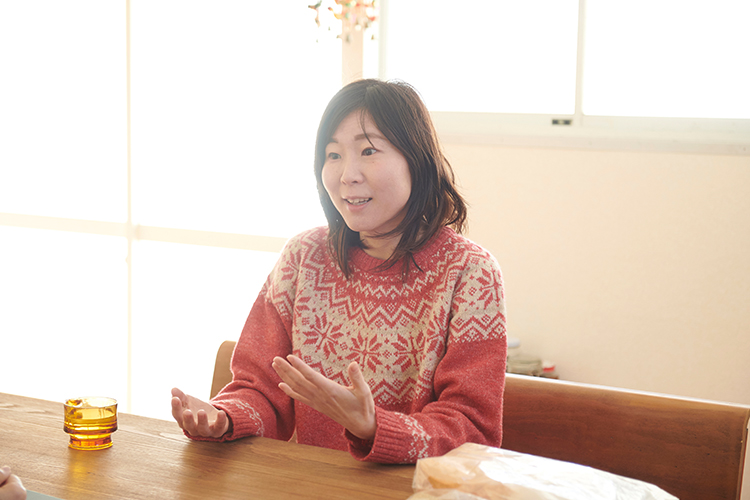
On the farms where Shimada stayed, she helped with the farm work and ate with the family. She was able to discover simple and delicious Korean food that is not available in Japan. Traditional seasonings take time because they are fermented by the natural action of bacteria. But she felt that time “is what makes the food delicious”.
Among the places Shimada stayed was a farm that produced, using traditional methods, meju, which are the basis of doenjang and gochujang. Meju are bricks of dried fermented soybeans and serve a role much like koji [malted rice] in Japanese miso. Making meju is complex, as the first fermentation takes about a week and the second fermentation goes on for some 50 days. This is partly why fewer people use traditional methods these days.
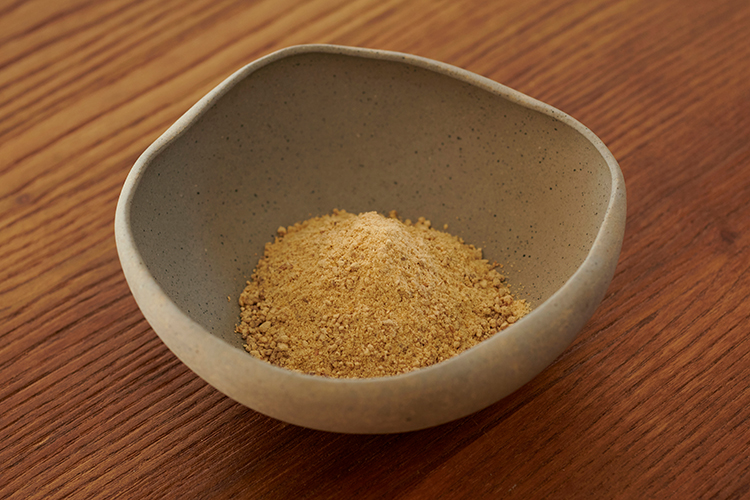
Meju is made of fermented soybeans. Shimada holds workshops on making meju.
“More places today skip processes that were done traditionally and have adopted more streamlined methods, whether they are making meju or seasonings. But even if the choice is made ultimately to eliminate a step or a process, there is a distinction between eliminating the process without knowing what it was for and eliminating the process after understanding it. That’s why I want to know the basic processes that Korean people have passed down — processes that better activate the bacteria to further the fermentation and processes that make the end product more delicious.”
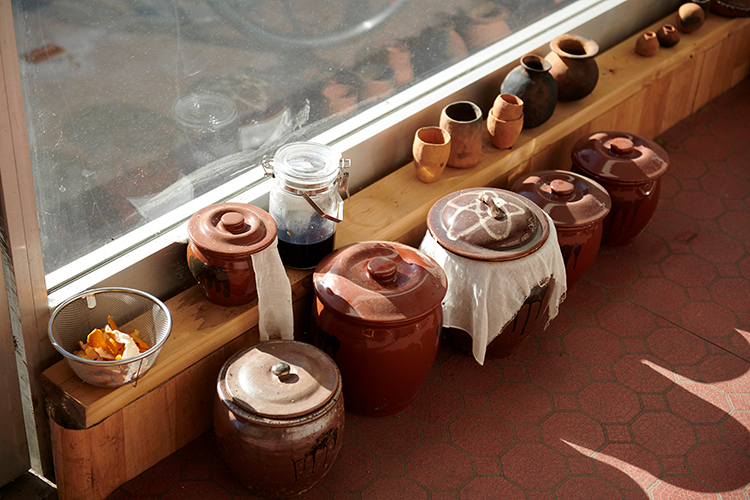
Shimada also wanted to grow Korean vegetables in Japan. She explained that experiencing farm work was very interesting from the standpoint of learning about food culture.
“By staying on farms, I became acquainted with Korean ingredients and food culture that would be impossible to learn in Japan. For example, I helped harvest omija [magnolia berries], the fruit of vine plants that are difficult to distribute while fresh even within Korea. Omija must be harvested when fully ripe and then quickly preserved in syrup or dried before they can be distributed. That’s why being able to help harvest fresh omija was such a precious experience. I also helped pick wild herbs. I was very interested to find out that in Korea they preserve these wild herbs in syrup or turn them into watery kimchi. Some of these wild herbs also grow in Japan. I harvest them when in season and use them in my cooking.”
Shimada traveled to many different parts of South Korea, visiting pesticide-free farms, subsistence farms, wild-herb farms, salt farms with evaporation ponds, and other types of farms. As she helped out, she gained knowledge on traditional seasonings, fermented foods, and preserves.
To share her learning and research, she began holding workshops and dinner parties.
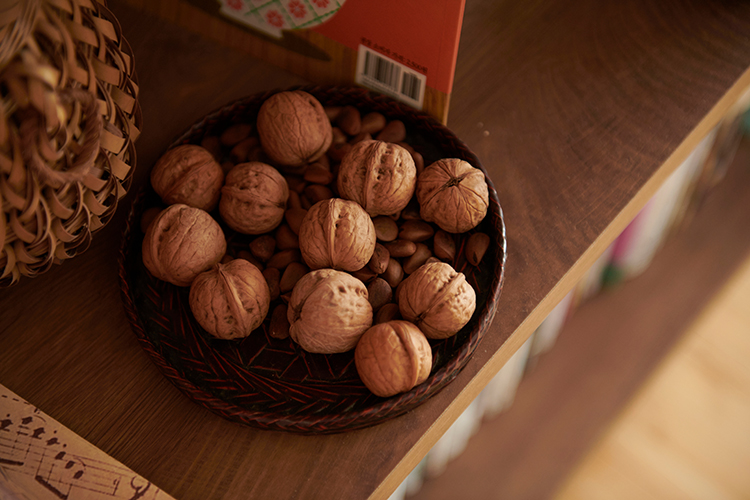
“One characteristic of Korean fermented foods is the long fermentation times, probably due to the climate and topography. Also, compared to Japan, where fermentation is practiced closely adhering to rigid rules, the Korean style is to be more easygoing about fermentation, in a way almost being neglectful, leaving the process up to the sun, wind, and other forces of nature.”
One Korean fermented food that Shimada shared with us was cheonggukjang. Cheonggukjang, being made from soybeans, is similar to natto [fermented soybeans]. Shimada’s workshops teach how to make cheonggukjang.
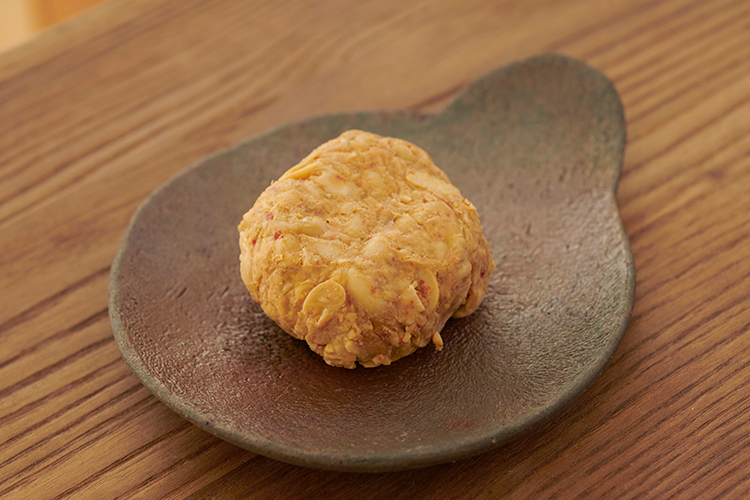
Cheonggukjang has a consistency and aroma similar to natto
“Cheonggukjang is made by boiling soybeans, placing rice straw in and around them, and then letting them ferment at a fixed temperature. Its stickiness and aroma are similar to natto, but it’s different in that hay bacteria act on the soybeans as well as the natto bacteria. Cheonggukjang is usually formed into a paste and added to and eaten in jjigae stews. Unlike Japan, it is not eaten on a bowl of rice. Instead, it is used more like a seasoning in the same way we use miso.”
In South Korea, the word cheonggukjang ordinary means both cheonggukjang the ingredient and jjigae stews with cheonggukjang added to them. Koreans regularly eat cheonggukjang, and every town has cheonggukjang restaurants that serve jjigae stews.
The cheonggukjang Shimada served us in a jjigae pot was filled with many vegetables such as tofu, mushrooms, onions, and potatoes, and topped with chopped green chilies.
After just one bite, we could taste the sweetness of the vegetables, the richness typical of fermented foods, and a flavor and taste similar to natto. The green chilies added a nice tingling accent. It tasted so much like miso that we couldn’t help but ask, “Is there miso in this dish?” Shimada replied, “There is no miso in it, just cheonggukjang.” The stew was so delicious and mildly flavored that we ate it all in no time.
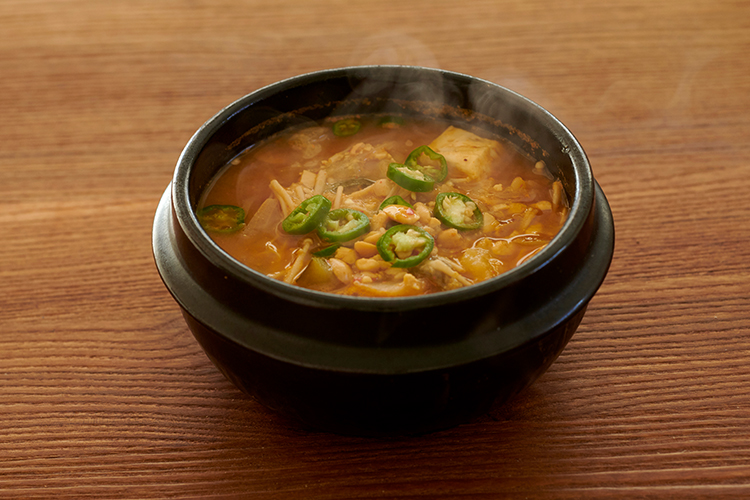
Cheonggukjang-based jjigae stew has a mild flavor
“There are many Korean restaurants in Japan. And due to the boom in Korean culture, lots of Korean dishes are being introduced. Because of this, many people have the impression that Korean food is red, spicy, and packed with garlic. But these dishes are only a small part of Korean cuisine. In fact, there are many simple, vegetable-based dishes that are healthy and full of flavor. I want to introduce Japan to more dishes like these that I learned about in the Korean countryside.”
Currently, Shimada is involved in many activities, such as making meju from scratch and holding workshops to prepare gochujang in Ogawa and, at her Tokyo base, holding kimchi-making workshops. She hopes to further expand her activities this year at Studio Paryo, which opened in November.
“At Paryo, we make additive-free dishes like samgye-tang [ginseng chicken soup] that are gentle on the body, prepared dishes, and fermented seasonings that make use of the wisdom of fermentation. I hope to publicize these activities and make more people aware of these foods.”

Shimada hasn’t been able to visit South Korea for the last couple of years because of the COVID-19 pandemic. But when conditions improve, she says she wants to travel to South Korea again to learn more about rural Korean food and then continue to share her knowledge.
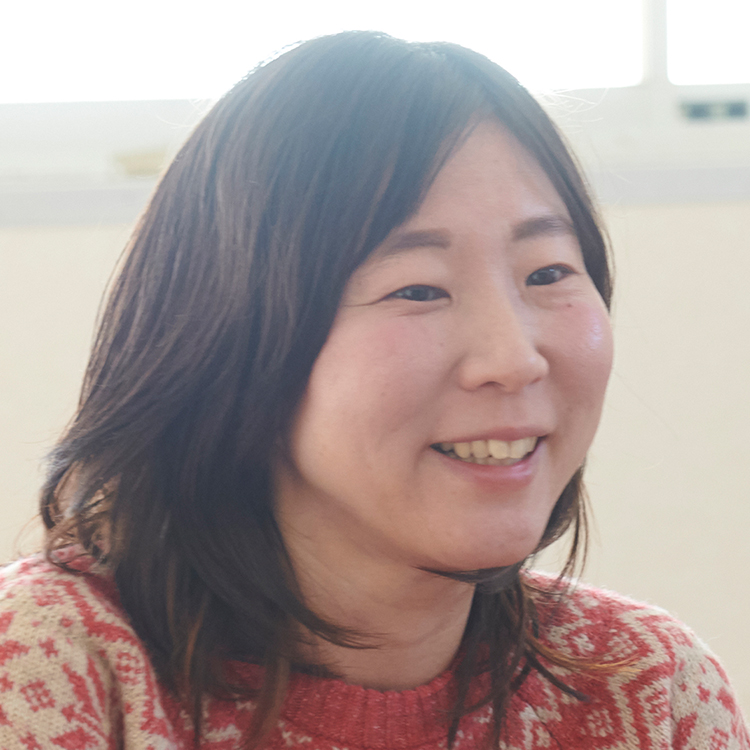
Rural Korean food researcher
Rural Korean food researcher
After working in the video industry, Shimada worked at a Korean restaurant in Tokyo and other related jobs. Later on, she served as the head chef at a Korean restaurant specializing in samgye-tang at an agricultural corporation in Kanagawa prefecture, while also getting involved in farming. In 2017, she started visiting pesticide-free farms, subsistence farms, wild-herb farms, salt farms with evaporation ponds, and other types of farms in South Korea to learn about, research, and practice traditional Korean seasonings, fermented foods, and preserves.
She currently runs workshops on Korean seasonings and hosts dinner parties that feature Korean ingredients. She also develops fermentation-based recipes. In 2021, she started a YouTube channel called Hakko Noen [Fermentation Farm] and in November of the same year opened Studio Paryo to produce and sell healthy dishes like samgye-tang and fermented seasonings.
Shimada’s personal site:
https://kozueshimada.amebaownd.com/
Studio Paryo’s site:
https://paryo.stores.jp